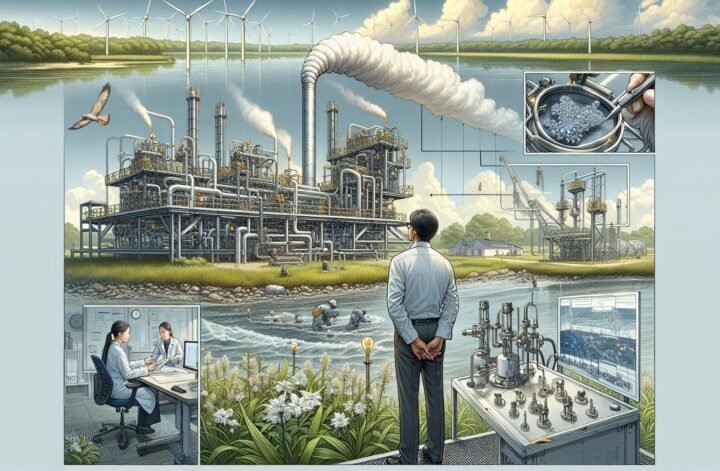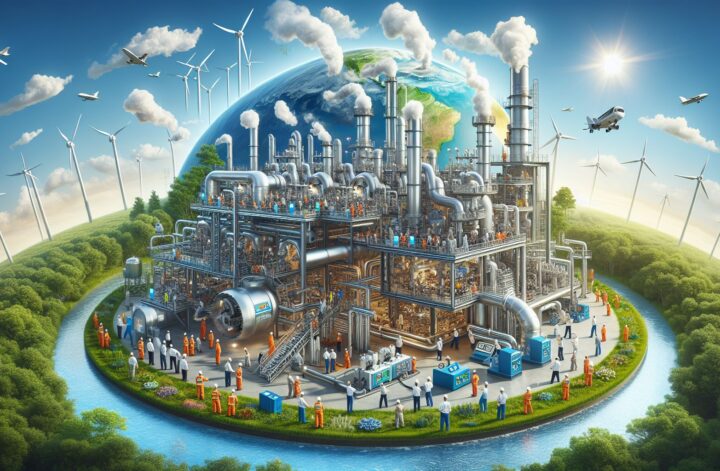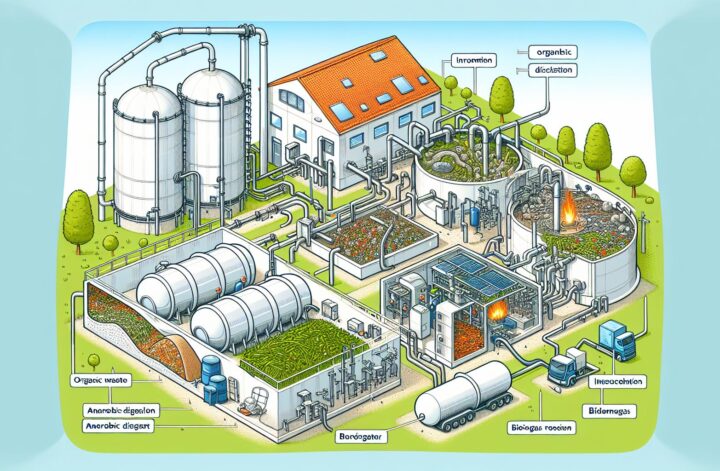Keywords: Methane capture, Anaerobic digestion, Renewable energy, Organic waste treatment, Greenhouse gas reduction.
As the world continues to grapple with the challenges of climate change, the need for renewable energy sources cannot be overstated. While popular discourse often leans towards solar and wind energy, another important segment of the renewable energy spectrum lies in the capture and utilization of methane, a potent greenhouse gas. Methane provides a significant avenue for converting organic waste into a valuable and renewable energy source[^1^]. This article explores the complex process of methane capture, with an emphasis on anaerobic digestion, elucidating why this process is integral to our energy future.
Understanding Methane
Methane (CH4) is a hydrocarbon that occurs naturally in the environment as a byproduct of the decomposition of organic matter. It is also the main component of natural gas, a nonrenewable fossil fuel[^1^]. Methane is a potent greenhouse gas, with a global warming potential 25 times greater than that of carbon dioxide over a century.
This innate potency of methane makes it both a potent threat to the environment and a valuable potential energy source. Standalone, methane released into the atmosphere contributes significantly to global warming. However, if captured and converted, it can produce heat and electricity, making bio-gas and a renewable energy source.
The Science of Methane Capture
The anaerobic digestion process is at the heart of methane capture. In this process, organic waste is converted into a renewable energy source, also known as biogas, majority of which is methane[^2^].
The process of anaerobic digestion involves four major stages:
-
Hydrolysis: The breakdown of organic matter (in the form of proteins, fats, and carbohydrates) into soluble molecules such as sugars, amino acids, and fatty acids.
-
Acidogenesis: The conversion of the soluble molecules produced during hydrolysis into volatile fatty acids and other organic acids, plus alcohols.
-
Acetogenesis: The conversion of the organic compounds from acidogenesis into acetic acid, hydrogen, and carbon dioxide.
-
Methanogenesis: The final phase where the acetic acid and hydrogen are converted into methane and carbon dioxide which form biogas[^3^].
Methane Capture and Organic Waste Treatment
Anaerobic digestion is not only a source of renewable energy but it also aids in organic waste treatment. This process can reduce the volume of waste materials by up to 90%, thereby solving waste disposal issues while generating useful energy. This indicates that methane capture is a significant component of effective organic waste management.
In addition to this, the solid residual of anaerobic digestion, known as digestate, is rich in nutrients and can be used as a soil conditioner. This not only reduces the need for artificial fertilizers but also aids in carbon sequestration, further mitigating climate change impacts[^4^].
Methane Capture and Greenhouse Gas Reduction
Anaerobic digestion and methane capture can play a major role in reducing greenhouse gas emissions. By capturing and using methane, we prevent it from being released into the atmosphere, thus reducing its contribution to global warming.
The process also leads to the production of renewable energy, which displaces the use of fossil fuels for energy production, leading to a further reduction in greenhouse gas emissions.
Conclusion
In conclusion, methane capture and utilization offer a viable and environmentally friendly solution for waste management and renewable energy production. Through the harnessing of “waste” resources, we can convert liabilities into sustainable assets for energy production, soil conditioning, and greenhouse gas reduction. As we continue to seek ways to mitigate climate change and transition towards cleaner sources of energy, methane capture remains a promising addition to the renewables mix.
[^1^]: Methane: Facts, Sources & Impact – Live Science [^2^]: Anaerobic Digestion – University of Oxford [^3^]: Overview of Anaerobic Digestion – Bioenergy Association of New Zealand [^4^]: Anaerobic Digestion and its Role in Greenhouse Gas Reduction – European Biogas Association




